Is the Cost of Megawatt Flash Charging Underestimated Behind the 10C Hype?
![]() 03/25 2025
03/25 2025
![]() 600
600
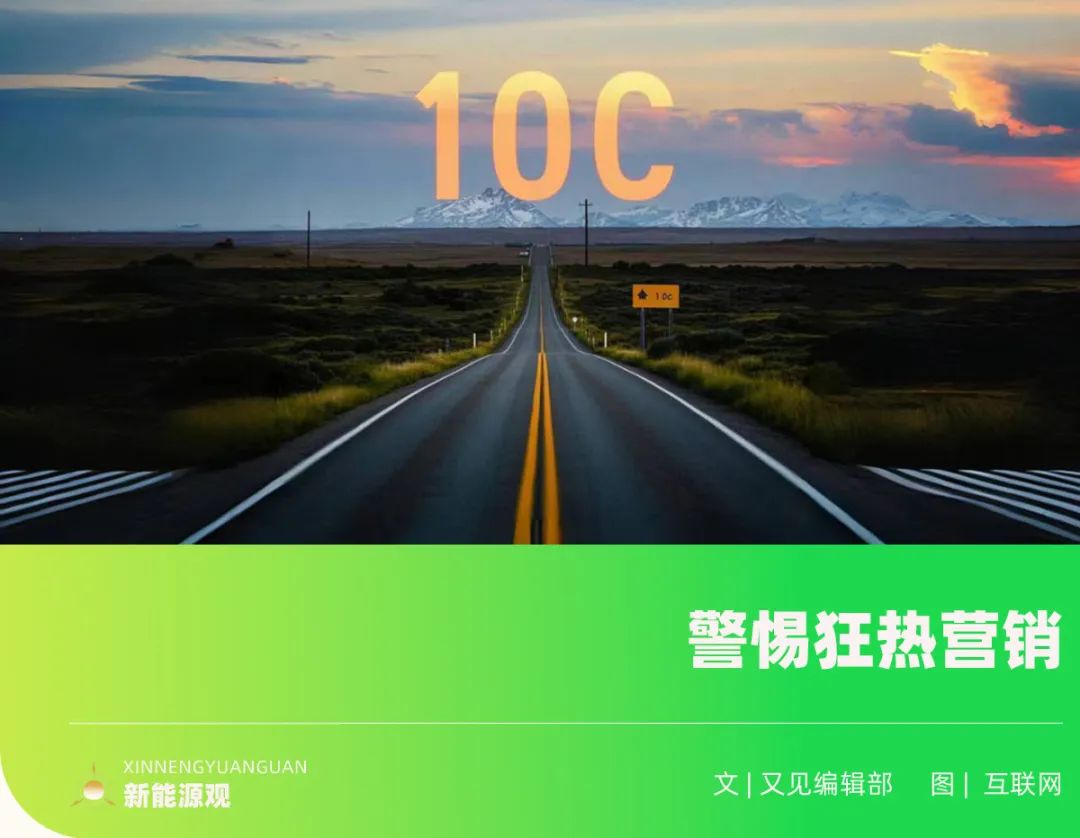
Original content by New Energy Perspective (ID: xinnengyuanqianzhan)
Total words: 2777, Reading time: 8 minutes
Recently, the term "10C" has frequently emerged, introduced by BYD in conjunction with its Megawatt Flash Charging technology. It signifies that a battery can be fully charged in one-tenth of an hour (6 minutes), a feat that BYD uses to illustrate "charging speeds comparable to gasoline vehicles."
It's crucial to note that "10C" represents a peak charging rate, which can only be sustained for approximately 30 seconds and should not be misconstrued as an average. Observant consumers may have noticed in BYD's Megawatt Flash Charging test video that only one Han EV is charging in a vast charging station, achieving "400 kilometers of range in 5 minutes." In reality, this is a low-probability event.
While BYD might be accused of exaggerated marketing, it has redefined the energy replenishment efficiency of electric vehicles, which is commendable. Amidst the excitement, however, we must seriously consider: For these brief "30 seconds," how much are consumers actually paying?
1. The Speed Myth and Hidden Costs
BYD's Megawatt Flash Charging technology undoubtedly showcases its innovative prowess in electrification. The 1000V high-voltage architecture, silicon carbide chips, and refrigerant direct cooling system collectively enable a peak charging speed of "2 kilometers per second," earning lasting applause at the launch event.
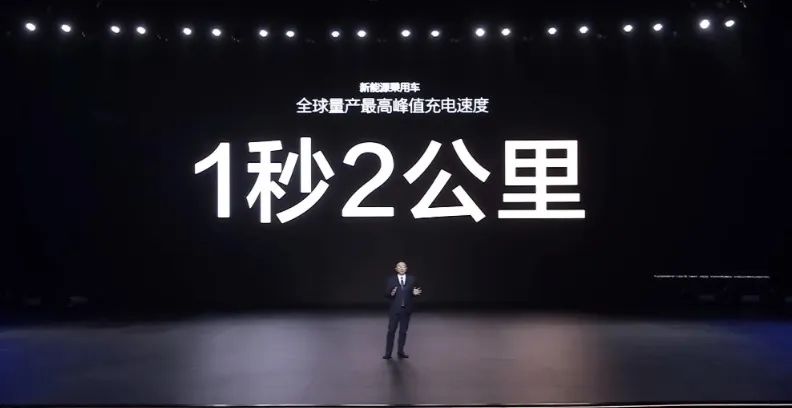
Image/BYD: Flash Charging Speed "2 Kilometers per Second"
Source/Internet Screenshot from New Energy Perspective
However, any cutting-edge technology's journey from the laboratory to large-scale application requires systematic commercial verification. Building a high-voltage fast-charging ecosystem involves coordinated upgrades across the entire industry chain, not just a single breakthrough.
In fact, the cost relay race from the laboratory to the real world has only just begun. Supporting 10C flash charging necessitates upgrading the battery cathode material to a high-nickel ternary system, equipping the electronic control system with expensive silicon carbide chips, and even replacing the charging gun with a liquid-cooled version. More crucially, a Megawatt ultra-fast charging station requires a 225 kWh energy storage cabinet to "appease" the power grid, pushing the construction cost of a single station to over six times that of ordinary fast-charging piles. These upgrade costs will eventually be passed on to vehicle prices and charging bills, making consumers pay a high opportunity cost for trying out new technology.
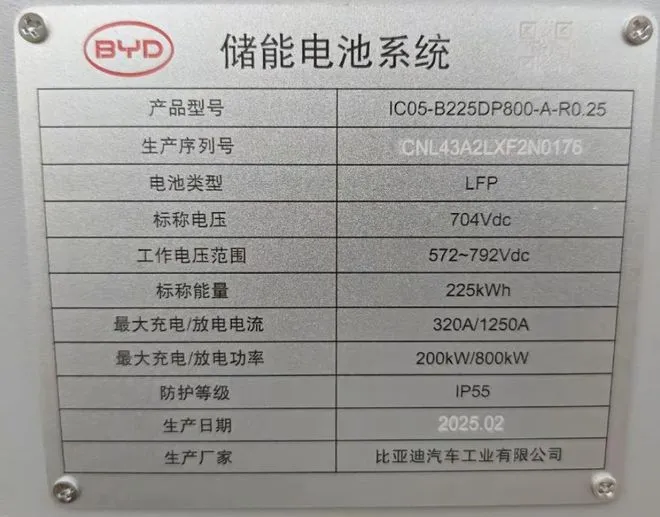
Image/BYD Energy Storage Battery System Standard Energy is 225kWh
Source/Internet Screenshot from New Energy Perspective
Comparing XPeng's 5C fast-charging battery with BYD's 10C battery, one wonders if consumers need to spend tens of thousands of yuan more for brief peak charging power in similar range scenarios.
Moreover, in actual use scenarios, there's room for discrepancy between users' experiences and laboratory data. Test data shows that adding 400 kilometers of range in 5 minutes is achievable under ideal conditions: a 25°C constant temperature environment, a power grid load below 50%, and exclusive use of the charging pile. However, in low-temperature winter environments, battery preheating consumes valuable charging time; during peak electricity usage hours, dynamic grid scheduling may limit charging power; and when multiple vehicles share a charging pile, your energy replenishment efficiency drops if the adjacent vehicle inserts two guns for charging.
These variables mean users' charging speeds in daily use may require dynamic expectation management based on specific scenarios. When technical parameters become marketing jargon, users may end up with a discounted "speed check."
At the current stage, Megawatt Flash Charging should be viewed more as a technological reserve rather than an immediate popularization solution. Similar to the iteration process of 5G communication technology, the commercialization of high-voltage fast charging requires the triple resonance of power grid renovation, battery innovation, and equipment cost reduction.
For consumers, this technology not only showcases a leap in charging speed but also demonstrates China's new energy vehicle industry's determination to delve deeper into technological waters. Even though widespread application is still a distance away, every laboratory breakthrough paves the way for the future.
2. Returning to the Essence of Demand: Consumers Refuse to Be "Suckers"
From a technological evolution perspective, Megawatt Flash Charging's breakthrough has positive significance in pushing the upper limit of charging efficiency and alleviating range anxiety, especially providing new solutions for long-distance travel and emergency energy replenishment scenarios. However, any technology's large-scale popularization needs to deeply align with users' actual needs and usage scenarios.
So far, most fast-charging piles in China have a power output of 50kW-150kW, with a small number of Megawatt-level ultra-fast charging stations above 480kW concentrated in first-tier cities' core business districts.
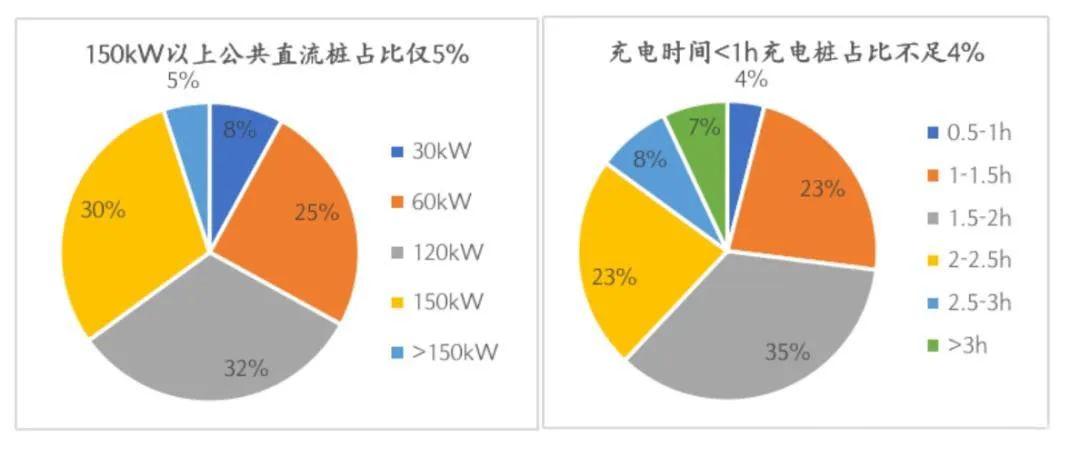
Image/Only 5% of public DC charging piles are above 150kW
Source/Internet Screenshot from New Energy Perspective
We all have this experience: Even when choosing a 120kW fast-charging pile, the actual input power is less than 60kW, or even lower, due to factors like insufficient transformer capacity, voltage fluctuations in the charging pile, current limitations, and battery performance. So, can Megawatt Flash Charging still achieve "400 kilometers of range in 5 minutes" in such actual usage scenarios?
Furthermore, the technical reliability of Megawatt Flash Charging's impact on battery health cannot be ignored. 10C ultra-fast charging means lithium ions complete embedding/desorption at sprint speeds, and high current density may exacerbate electrode structural stress. Third-party laboratory data shows that after 10 consecutive ultra-fast charging cycles, battery capacity declines 28% faster than in slow charging mode.
Although BYD controls the cell temperature difference within 5°C through real-time temperature control, the long-term effects of microscopic damages like lithium plating on the negative electrode and interface side reactions still need time to verify. Industry experts point out that if the battery life cycle drops from 2000 cycles to 1500 cycles, it will theoretically push up the user's lifecycle usage cost by about 12%.
Economics is another practical consideration. According to a survey by the China Electric Vehicle Hundred People Council, 80% of users drive less than 100 kilometers per day, and home slow charging for 8 hours can meet their needs. For most consumers, paying tens of thousands of yuan in high premiums for "less than 10 high-speed energy replenishment needs per year" requires careful evaluation of cost-effectiveness.
On another level, what automakers seldom mention in their promotions is that as battery performance declines with age, replacement costs can reach 30%-40% of a new car's price – a potential expenditure that significantly affects resale value.
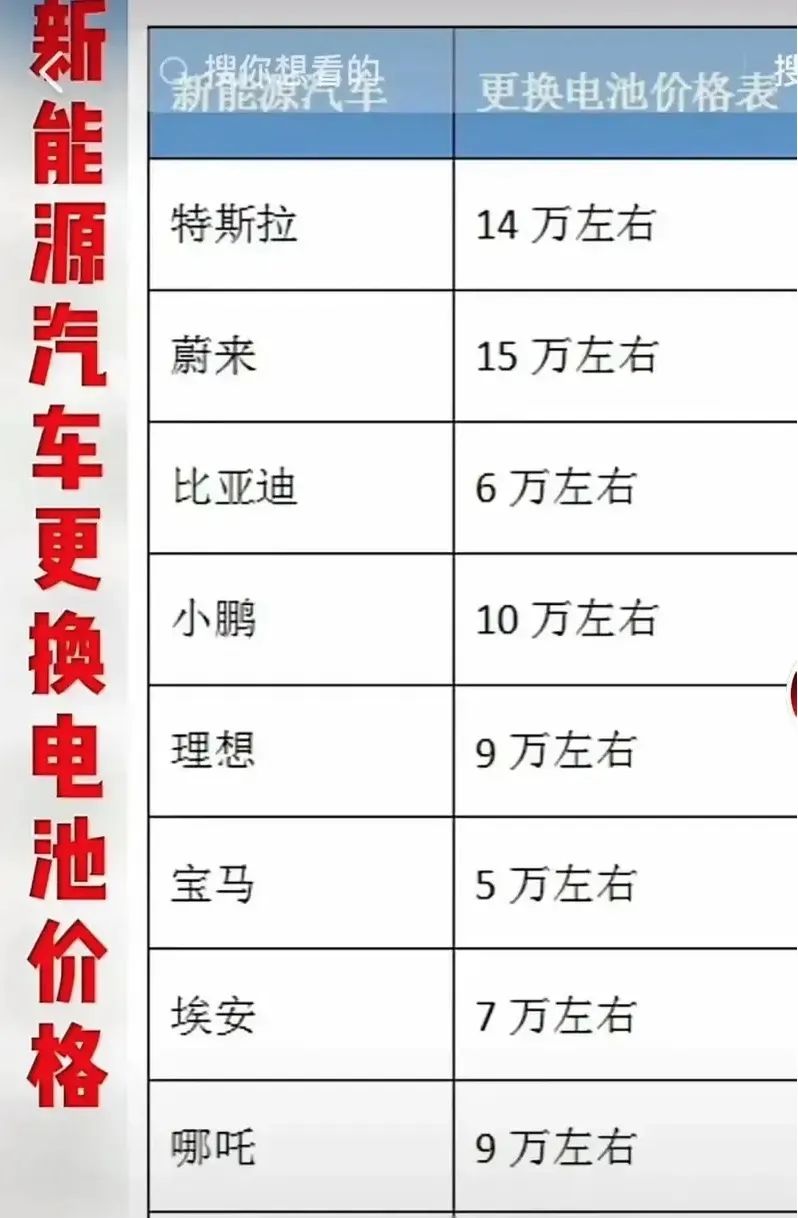
Image/Battery replacement price range of some automakers
Source/Internet Screenshot from New Energy Perspective
A more rational choice for consumers may be to return to the essence of demand. For high-frequency long-distance travelers, high-voltage fast-charging models can effectively improve efficiency; while urban commuters may be more concerned about solid range and vehicle purchase cost.
After all, when technical parameters are misaligned with real-life scenarios, refusing to be "suckers" may be a more pragmatic attitude for consumers. As automakers pursue technological frontiers, balancing pioneering innovation with inclusive value will be the key to winning the market.
3. The Synergistic Challenge of Technological Leap and Energy Replenishment Ecosystem
Behind BYD's 10C ultra-fast charging technological leap, the challenges of industrial chain coordination and energy replenishment ecosystem balance are equally worth pondering.
BYD's ultra-fast charging technology will undoubtedly drive technological iteration across the industry chain, but small and medium-sized enterprises face high R&D investment pressures. For instance, the operation and maintenance cost of ultra-fast charging piles are three times that of ordinary piles, and service fees are difficult to significantly increase due to market competition, resulting in significant short-term profitability pressures. This "loss-making business" will ultimately drag down the entire energy replenishment network.
Moreover, the choice of energy replenishment paths is diverging: BYD is betting on ultra-fast charging, while NIO is adhering to battery swapping. Assuming a battery swapping station needs to stockpile 15 batteries, the cost of a single station exceeds 3 million yuan; while a Megawatt ultra-fast charging station requires a supporting energy storage system with a hardware investment of about 1.5 million yuan. Both require large-scale resource investment but suit different scenarios – ultra-fast charging for high-speed emergency energy replenishment and battery swapping for high-frequency urban needs.
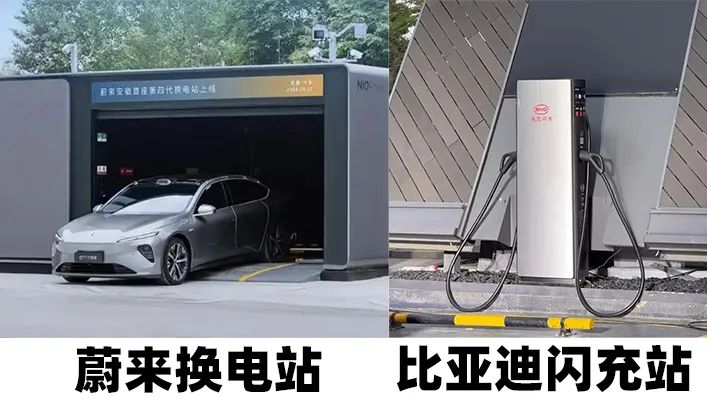
Image/Comparison between Battery Swapping Station and Flash Charging Station
Source/Internet Screenshot from New Energy Perspective
The future ecosystem may present a pattern of diverse coexistence rather than a "winner-takes-all" for a single technological route. Consequently, social resources will inevitably be diverted, policies will vacillate between the two routes, and users will only vote with their feet based on experience comparison – after all, no one cares about technological beliefs; they just want fast energy replenishment.
The power grid's capacity is the sword of Damocles hanging overhead, as ultra-fast charging technology poses a severe test to the instantaneous load on the power grid. If 4,000 Megawatt ultra-fast charging stations operate at full capacity simultaneously, their total power consumption is equivalent to the peak electricity consumption of a medium-sized city. Although BYD's proposed "integrated photovoltaic, storage, and charging" solution can alleviate grid pressure, the volatility of photovoltaic energy and energy storage efficiency loss still need optimization. Electricity price fluctuations may affect user costs. Calculated based on an average annual driving distance of 20,000 kilometers, if the electricity price per kWh increases by 0.1 yuan, the user's annual charging expenditure will increase by nearly 1,000 yuan.

Source/Internet Screenshot from New Energy Perspective
While Megawatt Flash Charging technology represents a leap in new energy vehicles' energy replenishment efficiency, its true value needs to be realized through ecological coordination. The future energy replenishment network should not be a zero-sum game of technological routes but rather a complementary coexistence of diverse models in their respective advantageous scenarios.
We must understand: The ultimate goal of electric vehicles is not to replicate the experience of gasoline vehicles but to create a more sustainable and inclusive mode of transportation. Rather than letting a single technological route "win all," it's better to let different models shine in their respective fields of advantage. Just as fast charging, wireless charging, and shared power banks coexist in the smartphone ecosystem, the future energy replenishment ecosystem will see ultra-fast charging stations serving high-speed emergencies, battery swapping stations covering urban hubs, and slow charging piles penetrating into community capillaries.
Next time, when you see the slogan "10C Flash Charging," you might want to give it a 50% discount and then wait patiently for the landing of its 4,000 charging stations.
[Header image generated by AI]







